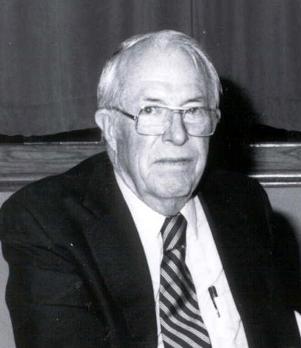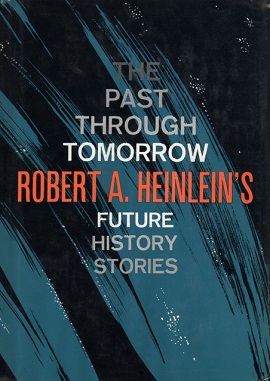Related Research Articles

Robert Anson Heinlein was an American science fiction author, aeronautical engineer, and naval officer. Sometimes called the "dean of science fiction writers", he was among the first to emphasize scientific accuracy in his fiction, and was thus a pioneer of the subgenre of hard science fiction. His published works, both fiction and non-fiction, express admiration for competence and emphasize the value of critical thinking. His plots often posed provocative situations which challenged conventional social mores. His work continues to have an influence on the science-fiction genre, and on modern culture more generally.

Space Cadet is a 1948 science fiction novel by Robert A. Heinlein about Matt Dodson, who joins the Interplanetary Patrol to help preserve peace in the Solar System. The story translates the standard military academy story into outer space: a boy from Iowa goes to officer school, sees action and adventure, shoulders responsibilities far beyond his experience, and becomes a man. It was published as the second of the series of Heinlein juveniles and inspired the media franchise around the character Tom Corbett, including the 1950s television series Tom Corbett, Space Cadet and radio show which made "Space Cadet" a household phrase whose meaning later shifted in popular culture.

The Moon Is a Harsh Mistress is a 1966 science fiction novel by American writer Robert A. Heinlein about a lunar colony's revolt against absentee rule from Earth. The novel illustrates and discusses libertarian ideals. It is respected for its credible presentation of a comprehensively imagined future human society on both the Earth and the Moon.

Methuselah's Children is a science fiction novel by American writer Robert A. Heinlein. Originally serialized in Astounding Science Fiction in the July, August, and September 1941 issues, it was expanded into a full-length novel in 1958. The novel is part of Heinlein's Future History series of stories. It introduces the Howard families, a fictional group of people who achieved long lifespans through selective breeding.
"Blowups Happen" is a 1940 science fiction short story by American writer Robert A. Heinlein. It is one of two stories in which Heinlein, using only public knowledge of nuclear fission, anticipated the actual development of nuclear technology a few years later. The other story is "Solution Unsatisfactory", which is concerned with a nuclear weapon, although it is only a radiological "dirty bomb", not a nuclear explosive device.
"Delilah and the Space Rigger" is a science fiction short story by American writer Robert A. Heinlein. One of his Future History stories, it originally appeared in Blue Book in December 1949 and was reprinted in his collection, The Green Hills of Earth.
"Ordeal in Space" is a science fiction short story by American writer Robert A. Heinlein, originally published in Town & Country, May 1948. It is one of Heinlein's Future History stories, and appears in his collection The Green Hills of Earth.
"The Green Hills of Earth" is a science fiction short story by American writer Robert A. Heinlein. One of his Future History stories, the short story originally appeared in The Saturday Evening Post, and it was collected in The Green Hills of Earth. Heinlein selected the story for inclusion in the 1949 anthology My Best Science Fiction Story. "The Green Hills of Earth" is also the title of a song mentioned in several of Heinlein's novels.

Revolt in 2100 is a 1953 science fiction collection by American writer Robert A. Heinlein, part of his Future History series.

Time Enough for Love is a science fiction novel by American writer Robert A. Heinlein, first published in 1973. The book made the shortlist for the Nebula, Hugo and Locus awards for best science fiction novel of that year, although it did not win. It did win a retrospective Libertarian Futurist Society award: the Prometheus Hall of Fame award for 1988.
Orphans of the Sky is a science fiction novel by American writer Robert A. Heinlein, consisting of two parts: "Universe" and its sequel, "Common Sense". The two novellas were first published together in book form in 1963. "Universe" was also published separately in 1951 as a 10¢ Dell paperback. The work presents one of the earliest fictional depictions of a generation ship.

John Stewart Williamson, who wrote as Jack Williamson, was an American science fiction writer, one of several called the "Dean of Science Fiction". He is also credited with one of the first uses of the term genetic engineering. Early in his career he sometimes used the pseudonyms Will Stewart and Nils O. Sonderlund.

The space marine is an archetype of military science fiction describing a kind of soldier who operates in outer space or on alien worlds. Historical marines fulfill multiple roles: ship defence, boarding actions, landing parties, and general-purpose high-mobility land deployments that operate within a fixed distance of shore or ship. By analogy, hypothetical space marines would defend allied spaceships, board enemy ships, land on planets and moons, and satisfy rapid-deployment needs throughout space.

The Past Through Tomorrow is a collection of science fiction stories by American writer Robert A. Heinlein, first published in 1967, all part of his Future History.

"Columbus Was a Dope" is a science fiction short story by American writer Robert A. Heinlein. It was first published in the May 1947 issue of Startling Stories. It later appeared in two of Heinlein's collections, The Menace from Earth (1959), and Off the Main Sequence: The Other Science Fiction Stories of Robert A. Heinlein (2005).
The science fiction writer Robert A. Heinlein (1907–1988) was productive during a writing career that spanned the last 49 years of his life; the Robert A. Heinlein bibliography includes 32 novels, 59 short stories and 16 collections published during his life. Four films, two TV series, several episodes of a radio series, at least two songs and a board game derive more or less directly from his work. He wrote the screenplay for Destination Moon (1950). Heinlein also edited an anthology of other writers' science fiction short stories.

Asteroids have appeared in fiction since at least the late 1800s, the first one—Ceres—having been discovered in 1801. They were initially only used infrequently as writers preferred the planets as settings. The once-popular Phaëton hypothesis, which states that the asteroid belt consists of the remnants of the former fifth planet that existed in an orbit between Mars and Jupiter before somehow being destroyed, has been a recurring theme with various explanations for the planet's destruction proposed. This hypothetical former planet is in science fiction often called "Bodia" in reference to Johann Elert Bode, for whom the since-discredited Titius–Bode law that predicts the planet's existence is named.

Exiles to Glory is a science fiction novella by American writer Jerry Pournelle, published in 1978. It is a sequel to the stories in the collection High Justice. As with those stories, it weaves the story of pioneering individuals in space with considerations of the technical and financial challenges facing them. It was republished in an omnibus edition with High Justice in 2009 as Exile—and Glory.
The fictional portrayal of the Solar System has often included planets, moons, and other celestial objects which do not actually exist. Some of these objects were, at one time, seriously considered as hypothetical planets which were either thought to have been observed, or were hypothesized to be orbiting the Sun in order to explain certain celestial phenomena. Often such objects continued to be used in literature long after the hypotheses upon which they were based had been abandoned.
Andrew Jackson "Slipstick" Libby is a fictional character featured in the "Future History" series of science fiction novels by Robert A. Heinlein. He is an enormously-talented and intuitive mathematician but received little formal education. His talent was first appreciated in the short story "Misfit" in which he helps guide an asteroid into the correct orbit after the guidance computer has failed.
References
- ↑ Patterson, William H. Jr. (2010), Robert A. Heinlein: In Dialogue with His Century, Macmillan, pp. 236–237, ISBN 978-1429964852.
- ↑ Slusser, George Edgar (1977), "The Classic Years of Robert A. Heinlein", Popular Writers of Today, vol. 11, Wildside Press LLC, p. 5, ISBN 0893702161.